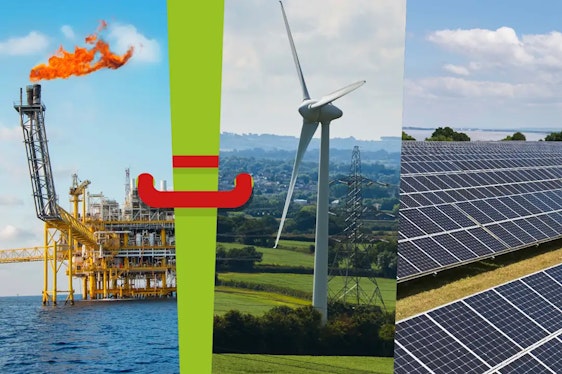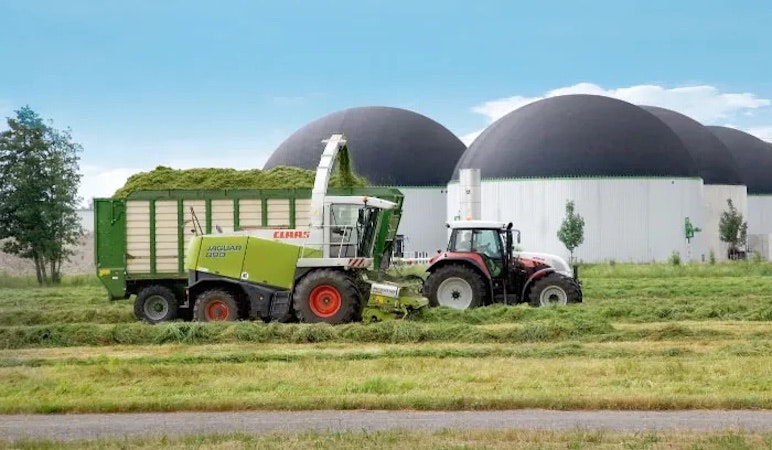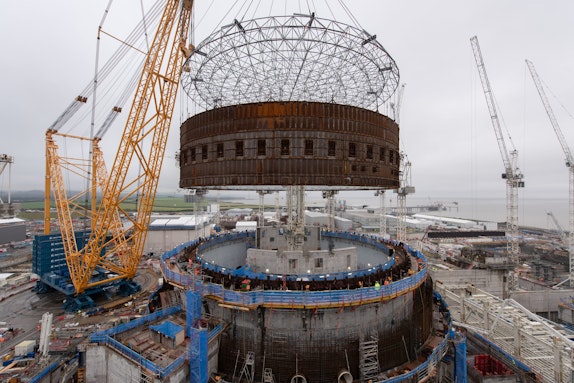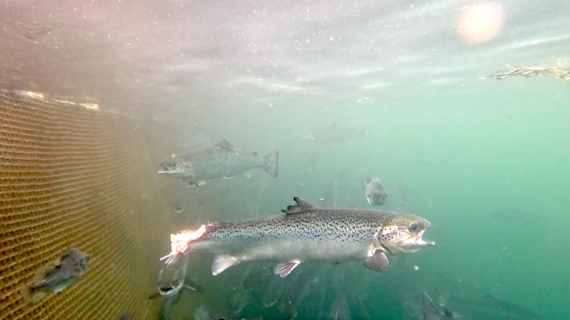
Breaking the Link Between Fossil Fuel and Renewables
High energy bills persist because our market ties green energy prices to fossil gas costs. Breaking this link could finally deliver cheaper, fairer, stable electricity.
The UK runs on gas. It heats 73% of our homes, yet we import a growing chunk of it from abroad -often at extortionate prices, as seen when Russia invaded Ukraine and sent bills soaring. Meanwhile, the government’s answer? A rushed and expensive heat pump rollout that only works for some.
But there’s a better way - green gas. It’s sustainable, homegrown, and can slash emissions while boosting nature. Instead of drilling the North Sea or shipping gas thousands of miles, we can grow our own. And the best part? It works with the infrastructure we already have.
Green gas is produced using grass cuttings, broken down by bacteria in large vats - similar to how a cow’s stomach works. The result? Biomethane - a clean, renewable gas that can be fed directly into the grid, replacing fossil gas.
Unlike other so-called "green" gases, this method involves zero animal exploitation. Instead, it regenerates farmland, supports biodiversity, and strengthens our economy with long-term jobs. Here’s how…
Natural gas from the North Sea releases carbon that’s been locked away underground for millions of years, adding to the climate crisis. Green gas avoids this entirely. The carbon it emits when burned is the same carbon the grasses absorbed while growing - keeping it in natural circulation rather than pulling up ancient reserves.
That’s why green gas cuts emissions by 87% compared to fossil gas. And we can do even better - up to 99% reductions - with smart automation and well-monitored production systems.
Then there’s the hidden carbon cost of imported gas. In 2022, the UK imported a record 27% of its gas from the US. It’s liquefied, shipped across the Atlantic, and re-gasified here - creating four times more emissions than North Sea gas before we’ve even turned on the heating.
Green gas eliminates these transport emissions. It’s produced locally, fed straight into the gas network, and sent to nearby homes. No tankers, no middlemen, no spiralling foreign gas prices.
The UK is one of the most nature-depleted countries on Earth. Years of intensive farming have wrecked our soils, polluted our waterways, and pushed wildlife to the brink. Green gas production offers a way to reverse the damage.
Instead of monocultures - where one crop strips nutrients from the land - we grow herbal leys. These diverse mixes of plants - chicory, clovers, ribgrass - restore soil health instead of draining it, cutting the need for synthetic fertilisers.
Wildlife wins too. Bees, butterflies, and insects thrive among the pollen-rich plants, feeding the wider ecosystem - shrews, owls, kestrels, and beyond. Meanwhile, the deep roots of herbal leys improve soil structure, reducing flood risk by soaking up excess rainwater.
We harvest the fields twice a year, making sure plants grow, flower, and reseed between cuts - so habitats remain intact year-round. This isn’t about wrecking landscapes for energy production; it’s about working with nature, not against it.
And for those worried about food security - green gas doesn’t need to take farmland away. Even excluding land already used for grazing, the UK has 6.46 million hectares suitable for green gas production. That’s enough to generate 236.5 TWh - enough to heat 78.8% of UK homes without a single insulation upgrade.
Farmers might even welcome it - herbal leys can be grown between crop cycles to rejuvenate soils. Plus, the by-product of green gas production is natural fertiliser - so farmers can cut back on expensive, fossil fuel-derived alternatives.
The government is ploughing millions into subsidised heat pumps - aiming for 600,000 installations a year to cut gas reliance. But for most homes, heat pumps aren’t the best option.
Upfront cost – Even with a grant, heat pumps cost at least £2,000 more than a gas boiler to install.
Poor efficiency – The UK has some of the worst-insulated homes in Europe. Heat pumps need well-insulated houses to perform well - but ours leak heat up to three times faster than those in Germany.
High running costs – Electricity is four times more expensive than gas, meaning heat pumps can be more expensive to run in badly insulated homes.
Grid overload – Heat pumps put huge pressure on the electricity grid. The UK would need massive grid upgrades to cope with 600,000 new heat pumps each year - at a staggering cost.
We do need to move away from natural gas - especially after seeing its price triple in 2022 when Russia invaded Ukraine. But heat pumps alone aren’t the solution.
The government should keep subsidising heat pumps - for homes that are suitable. But for the millions that aren’t, we need to invest in green gas. It’s cost-effective, homegrown, and doesn’t require people to spend thousands ripping out their heating systems.
By growing our own energy, we can slash emissions, cut reliance on foreign gas, and boost nature - all at the same time.
The technology is ready. The land is available. The climate crisis isn’t waiting.
So what’s stopping us? Let’s get on with it… :)
High energy bills persist because our market ties green energy prices to fossil gas costs. Breaking this link could finally deliver cheaper, fairer, stable electricity.
Sizewell C is an overpriced, delayed, and risky nuclear project we don’t need. Renewables are faster, cheaper, and safer—yet households will pay billions for Sizewell before it even generates electricity.
Salmon farming is a toxic, unsustainable mess—polluting oceans, killing wild fish, and fueling disease. It’s time to shut it down before it wipes out marine ecosystems for good.
Forest Green Rovers is the world’s greenest football club - powered by clean energy, serving vegan food, and tackling transport emissions. Now, we’re building Eco Park, a stadium that will set new sustainability standards.



